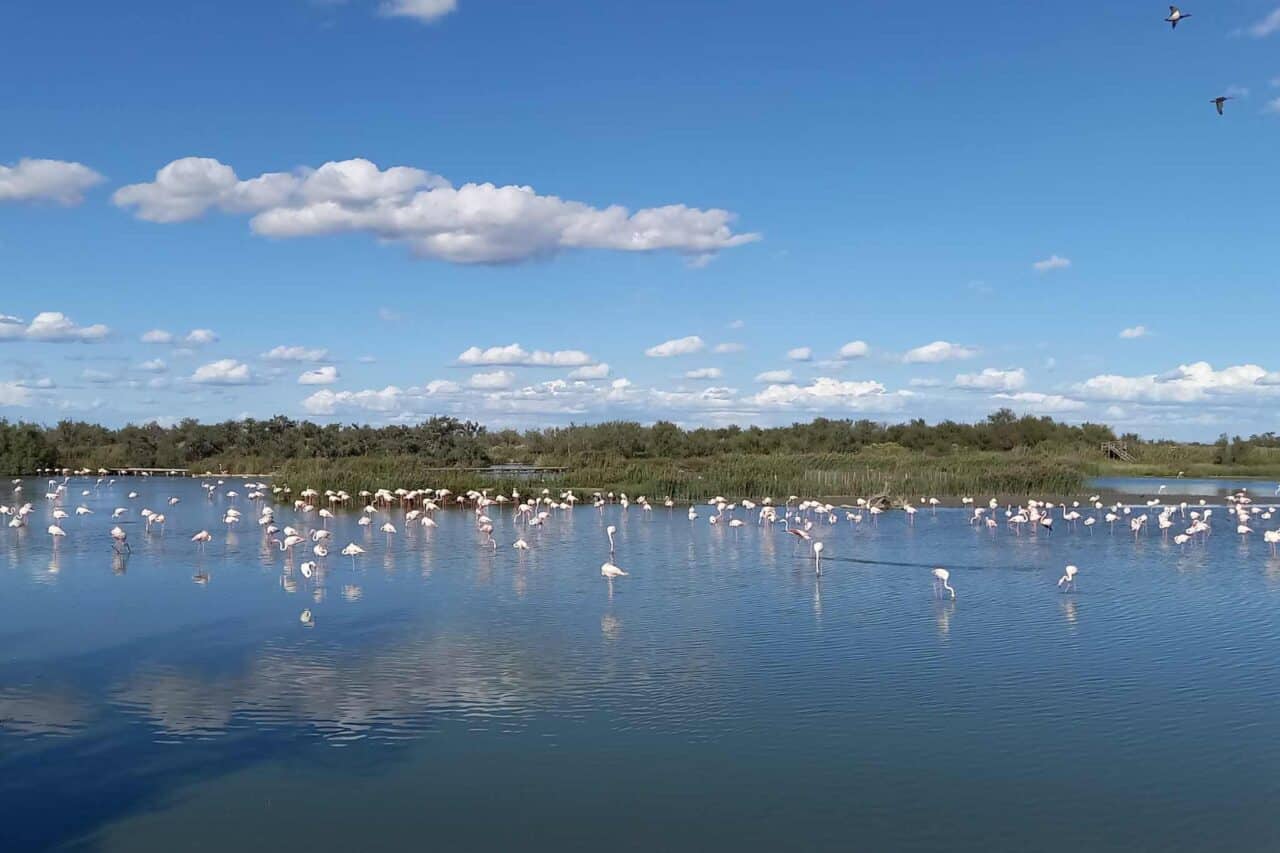On the south coast of France, between the port cities of Montpellier and Marseille, you will find a very special place: the Parc naturel régional de Camargue. The Camargue, a protected landscape area belonging to the Provence-Alpes-Côte d’Azur region, is characterized by seemingly endless white sandy beaches, colourful heathland, vast marshes, countless étangs, salt marshes and rice fields – and a view that is interrupted by (almost) nothing. Not to forget: the three most important inhabitants of the Camargue that will accompany you during your vacation here: Horses, bulls and flamingos.
Inhaltsverzeichnis
- Climate and best time to go camping in the Camargue
- Infrastructure for campers – with pitch tips
- Campsites in the Camargue
- Natural paradise Camargue: sun, beach and salt fields as far as the eye can see
- The ornithological park: flamingos, gulls, herons & co.
- The salt fields of the Camargue
- Cycling tours along the sea and the Étangs
- Places worth seeing in the Camargue
Climate and best time to go camping in the Camargue
In principle, the Camargue, like the entire south of France, can be visited by van, motorhome, caravan or tent at any time of year. Although temperatures do get quite chilly in the winter months, they don’t usually drop below freezing and can reach up to twelve degrees Celsius during the day. Otherwise, spring starts early and fall ends late, so you can relax and enjoy a warm late summer until the end of October, and the Mediterranean is still pleasant for swimming at this time.
If you don’t like the very hot (and very crowded with tourists) high summer – at this time, of course, it’s always pure bathing weather – the most pleasant months to travel are from April to mid-June and from September to early November. You can find the most important information about traffic rules in France in this article.
Infrastructure for campers – with pitch tips
The Camargue is a protected landscape area, so you will find a lot of nature and fewer urban structures. This also means completely different noises: hardly any car noise or industry, but more wave noise and the chirping of crickets. There are small towns, such as the capital Saintes-Maries-de-la-Mer and the fortified town of Aigues-Mortes, with an infrastructure for everyday needs, but you won’t find any large shopping centers here. It is therefore worth doing the bulk shopping for your vacation beforehand, for example in the town of Arles, which borders the area to the north. You’ll find everything you need here.
The number of campsites and pitches is therefore limited, at least within the narrow boundaries of the Camargue, the actual nature reserve. At the gates to the Camargue, for example at Le Grau-du-Roi or Aigues-Mortes in the west, you will find more offers and day trips to the area are also recommended from there. But if you want to enjoy the quiet, relaxed atmosphere for a longer stay, then one of the following places is ideal.
Campsites in the Camargue
Camping Les Bois Flottés, Salin-de-Giraud
Les Bois Flottés campsite is located directly at the mouth of the Rhône in Salin-de-Giraud and next to the large salt marshes. The site offers a comprehensive infrastructure, numerous leisure facilities such as a swimming pool and boules court, as well as a farm with goats, ducks, chickens, llamas and, of course, horses.
Camping de la Brise, Saintes-Maries-de-la-Mer
The large Camping de la Brise, located directly by the sea on the edge of the village of Saintes-Maries-de-la-Mer, is ideal for beach lovers, water sports enthusiasts, cyclists and vacationers simply looking to relax. The family-friendly campsite offers a spacious pool area with water slides, direct access to the beach, playing fields for soccer and basketball, a boules court and different plot sizes for different camping vehicles.
Camping Le Clos du Rhône
Just under three kilometers west of Saintes-Maries-de-la-Mer, Le Clos du Rhône campsite offers numerous pitches for motorhomes and caravans as well as rental accommodation. The pitches are usually separated from each other by hedges and plants, and depending on your needs you can choose between a simple pitch, a pitch with electricity or a pitch with water, waste water and electricity.
There are also a few pitches, for example directly in the town of Saintes-Maries-de-la-Mer, as well as private options for camping with a van, motorhome or caravan. From the squares, you can go on numerous excursions and tours either by bike, on foot or by car or bus. Below we present a few ways to discover this unique corner of the world.
Natural paradise Camargue: sun, beach and salt fields as far as the eye can see
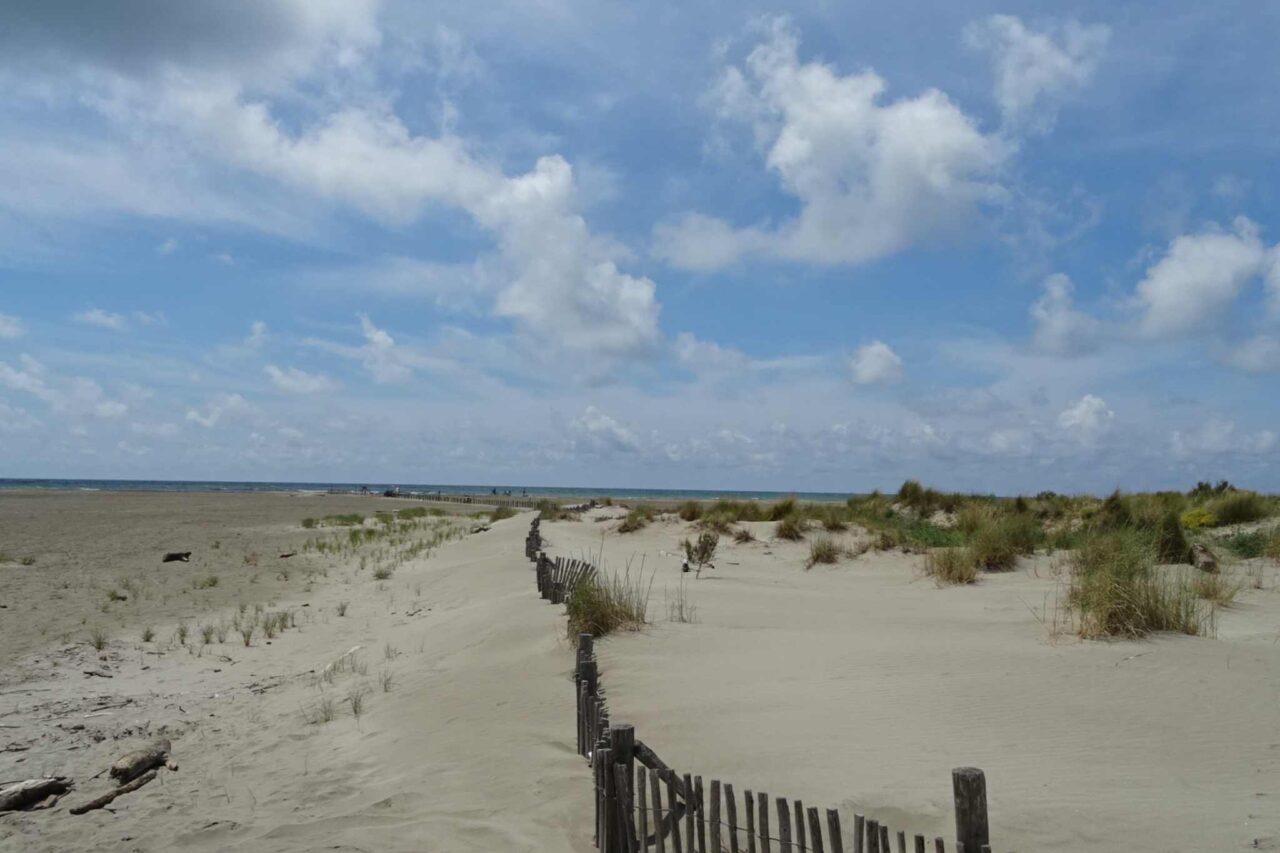
Incredibly wide and endlessly long sandy beaches are just as characteristic of the Camargue as wild marshes and étangs – and whether on the beach or in the hinterland, the wild inhabitants will accompany you almost everywhere. The Camargue is home to one of the largest flamingo colonies in Europe, the Camargue horses are bred here, are pets of the inhabitants and are used for tourist rides and shows. And the bulls? Yes, you will also regularly see them on the huge pastures to the left and right of your path.
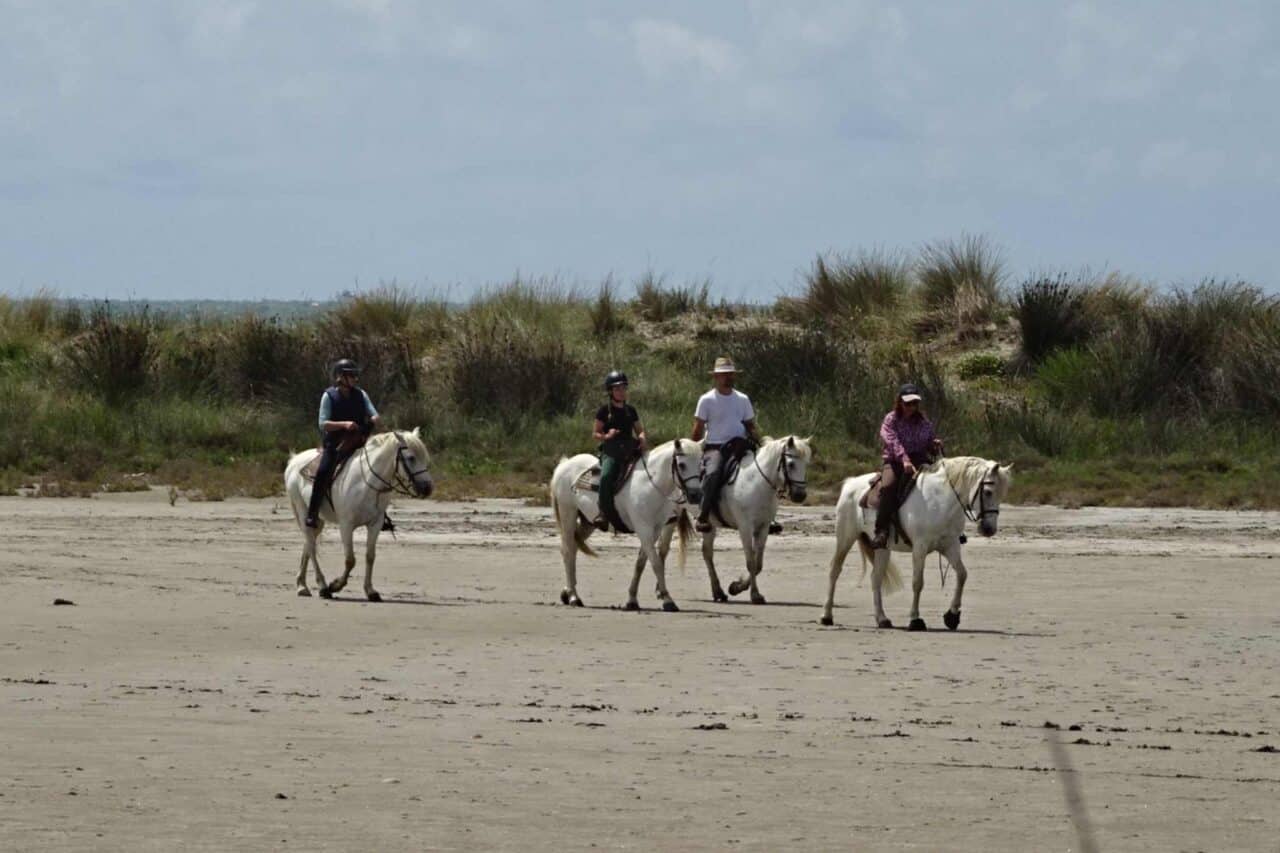
Whether it’s a long walk on the beach, a swim in the sea, collecting flotsam and jetsam, a relaxing bike ride or watching the wild flamingos – if nature is enough for you, you can spend endless weeks here.
The ornithological park: flamingos, gulls, herons & co.
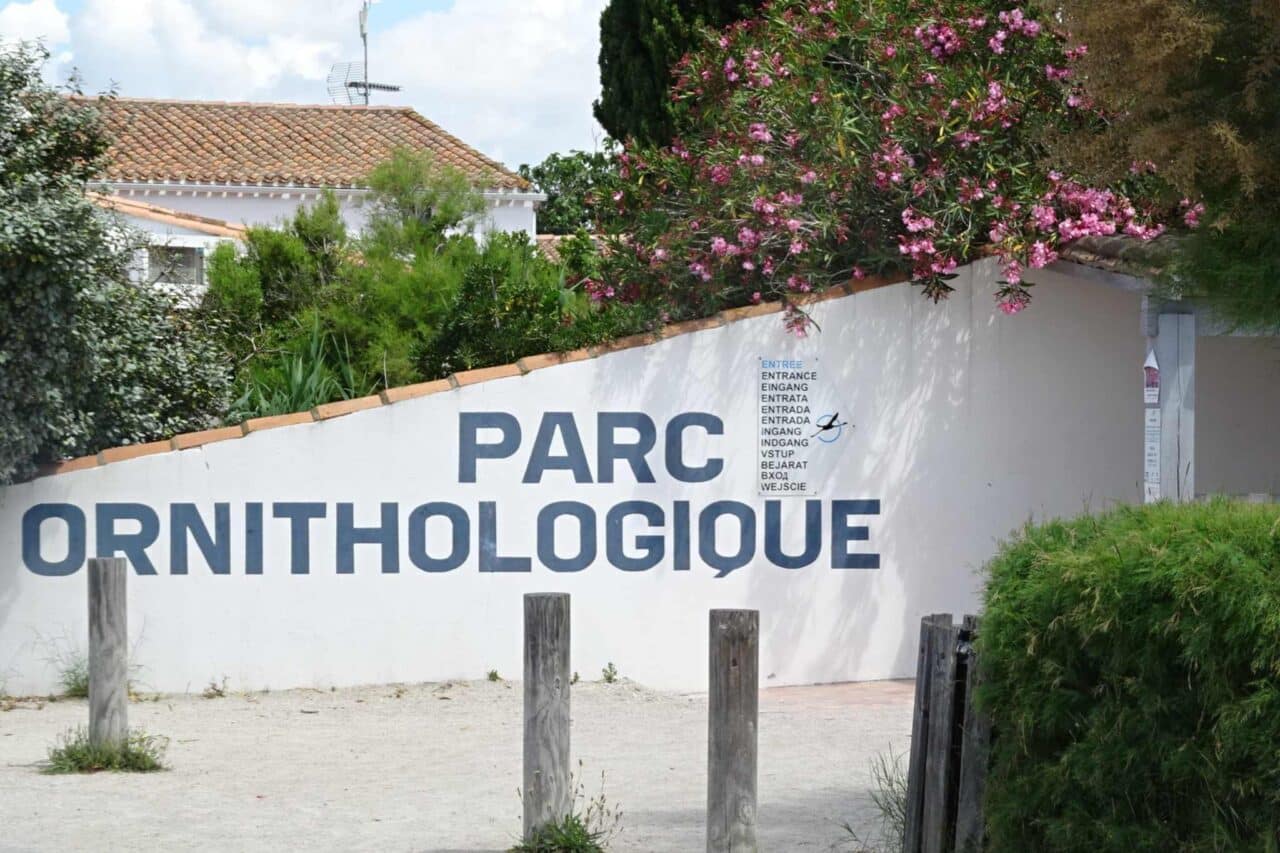
Even if you encounter the pink inhabitants of the Camargue and the numerous bird species everywhere: The parc ornithologique near Saintes-Maries-de-la-Mer is something very special and definitely worth a visit: you can discover, observe and photograph hundreds of flamingos, get very close to gray herons, gulls and storks – and all this on a 60-hectare area that is part of the natural landscape of the Camargue and thus the natural habitat of the birds. You can explore the park on two circular tours. You should definitely take your time – and, especially if there is no wind, pack mosquito repellent!
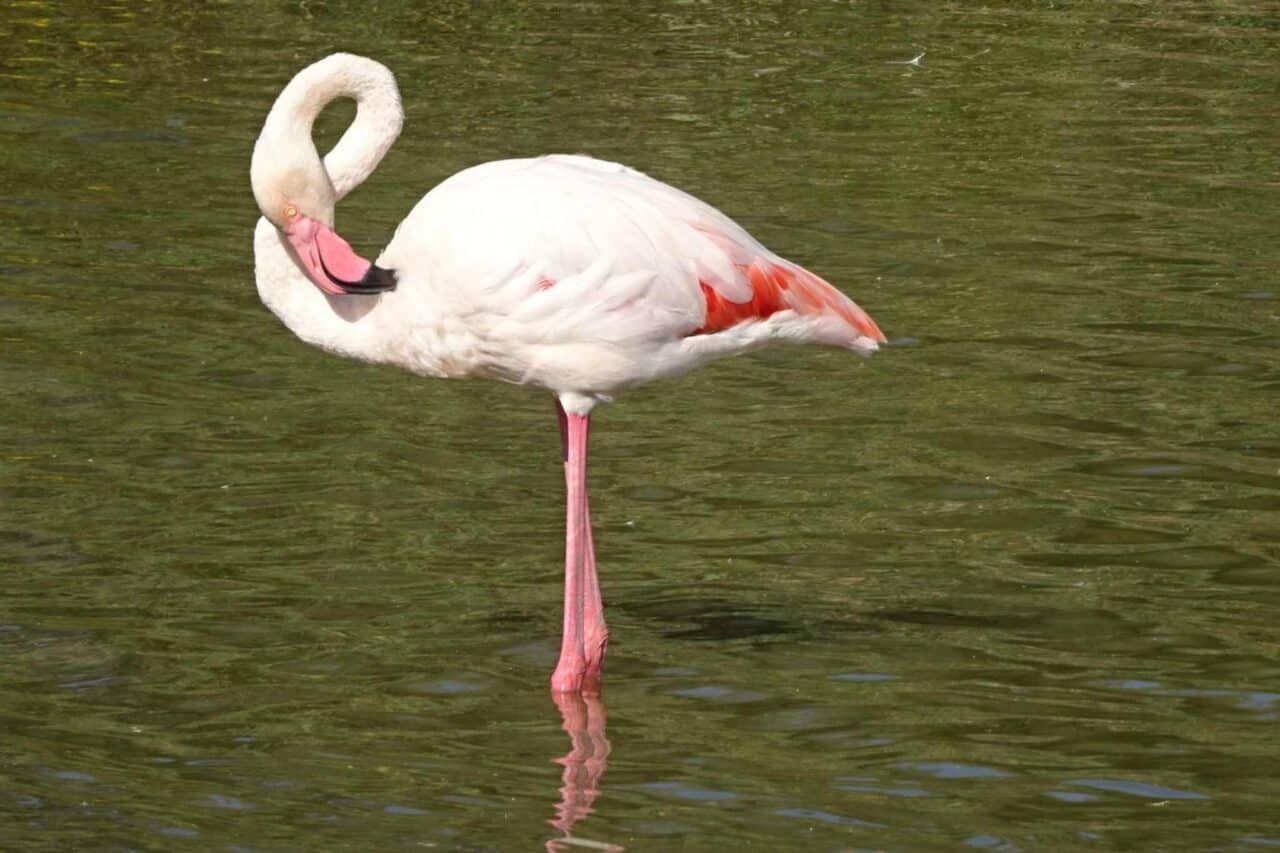
The salt fields of the Camargue
As is so often the case, stories begin with the ancient Romans – and so do those of the Camargue salt fields. The manual work involved in extracting fleur de sel has not changed to this day. The two largest salt marshes in the Camargue still in operation today are the Salins du Midi near Aigues-Mortes in the west and the salt marshes in the town of the same name, Salin-de-Giraud, in the east of the region. They cover an area of several thousand hectares and are the largest salt production sites in France.
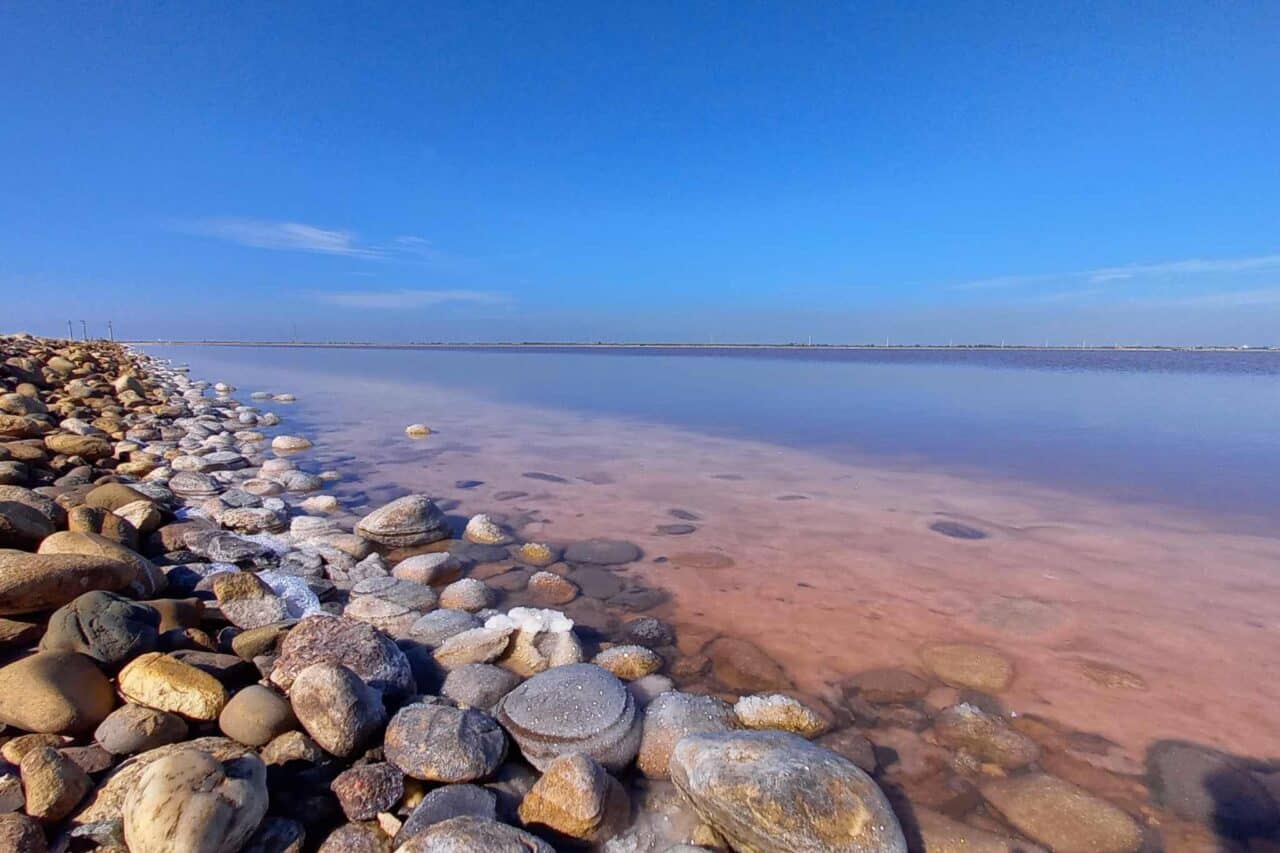
At the Saline de Giraud, salt is mainly cultivated for industrial use, and the site can be explored on tours by car, bike or on foot. And it really is an exploration, because the information on the few information boards is limited, but you have an undisturbed impression of the landscape of the salt pans and can take it all in for yourself. The route also exudes a touch of adventure. In the Saline du Midi, on the other hand, there are guided tours, also by bike, car, on foot or on the little slow train, which takes just under an hour through the salt marshes of Aigues-Mortes. It is advisable to book a ticket in advance, especially in the high season.
Cycling tours along the sea and the Étangs
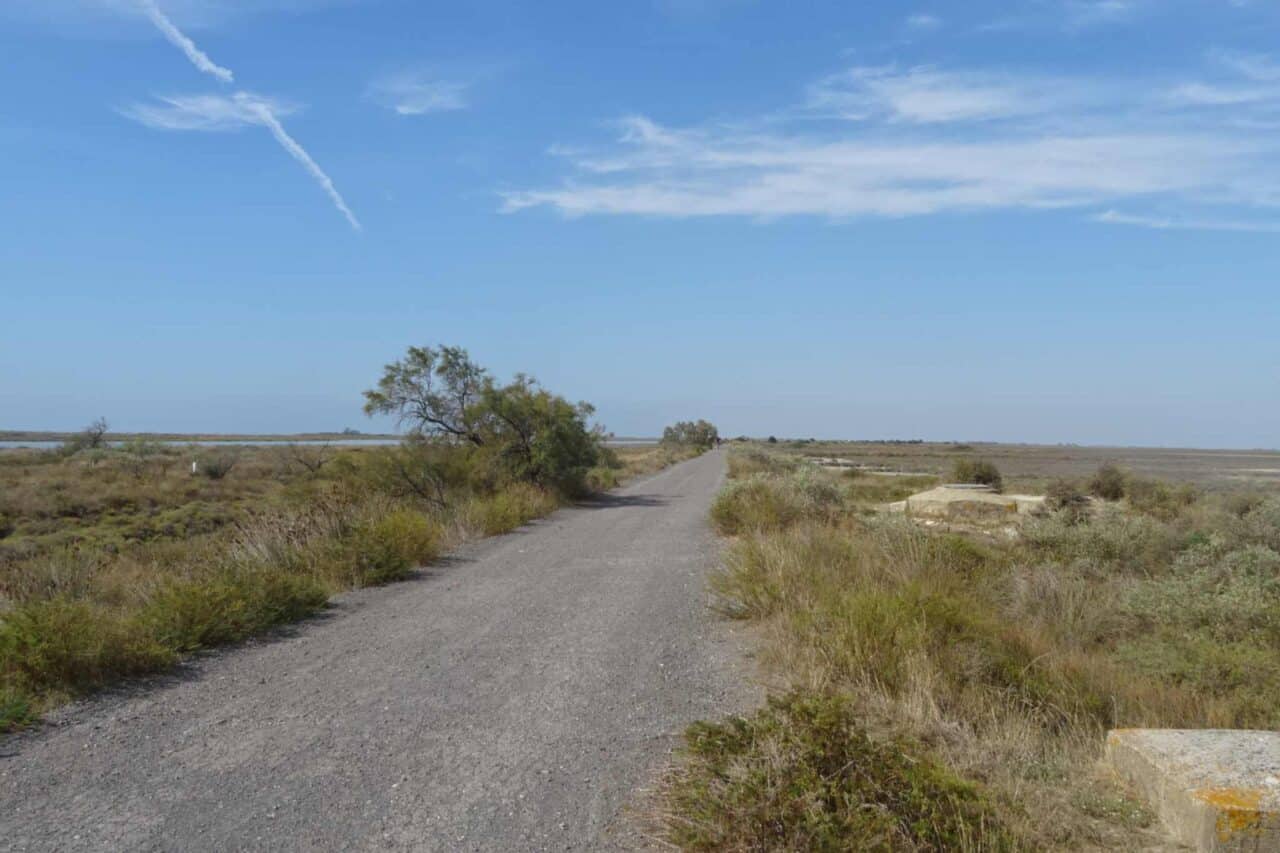
Between the capital Saintes-Maries-de-la-Mer and the village of Salin-de-Giraud, there is a hiking and cycling trail of about 25 kilometers, always along the sea, the marsh and heathland, the Étangs and flamingo colonies. Coming from Saintes-Maries-de-la-Mer, the La Gacholle lighthouse is around seven kilometers away and serves as a good landmark from almost anywhere on this route, as it is the highest point in the otherwise flat landscape. The path is beautiful due to the surrounding landscape, but on the other hand it invites you to take it easy on some sections, as it is not a paved, flat cycle path, but has a rather demanding relief.
A day trip to the salt pans in Salin-de-Giraud is definitely recommended if you are staying near Saintes-Maries-de-la-Mer. If you are staying at a campsite near Salin-de-Giraud, it is worth taking a day trip to the capital of the Camargue.
If you are up early, you can enjoy another beautiful natural spectacle without having to pay an entrance fee: As the landscape is so flat, you have the best view of the sunrise over the sea in the east and the sunset in the middle of the Étangs in the west, weather permitting (which is usually the case). It is not unusual for fishermen and fisherwomen to be at work at dawn and at sunset you will be accompanied by the relaxed chattering of flamingos.
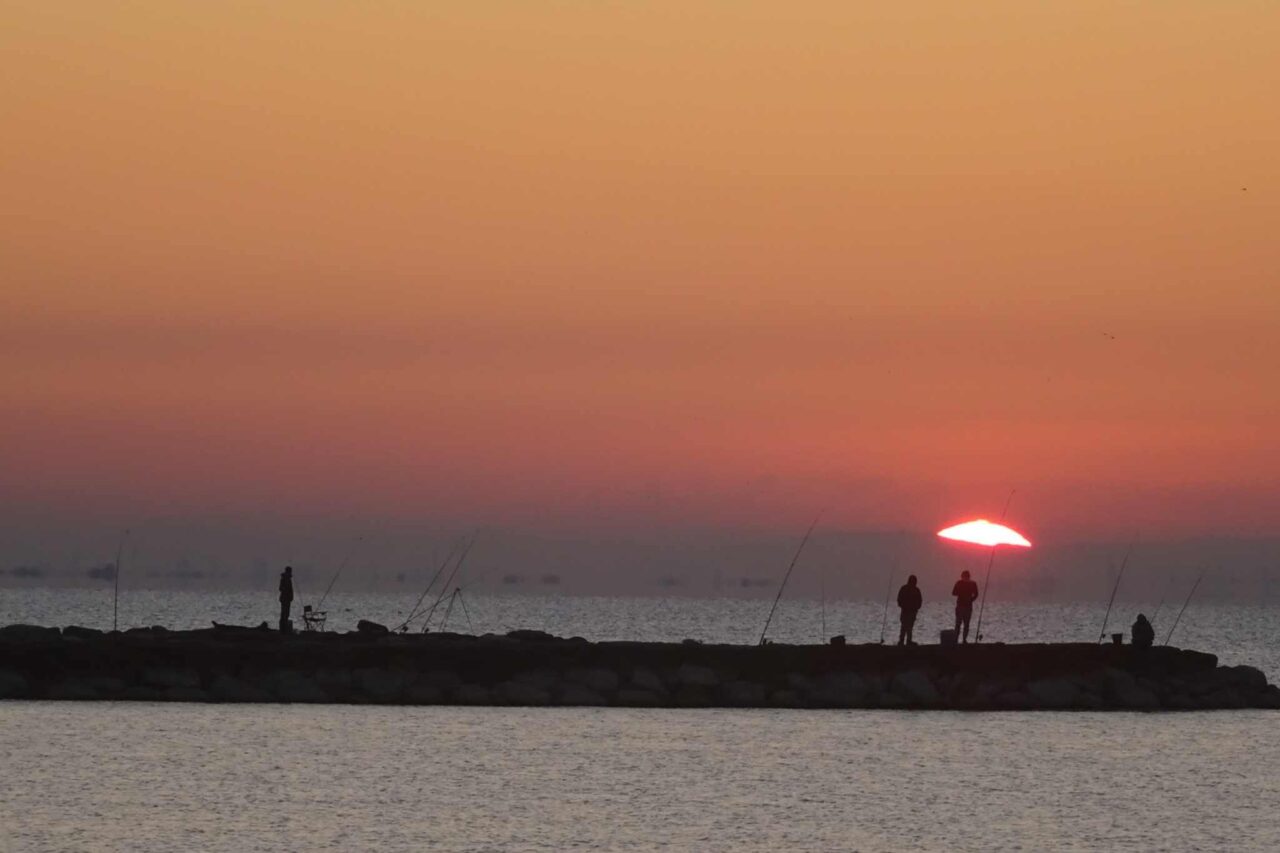
Places worth seeing in the Camargue
But you won’t just find beaches, the sea and endless expanses here in the south of France, small towns and cozy villages also create a very special ambience.
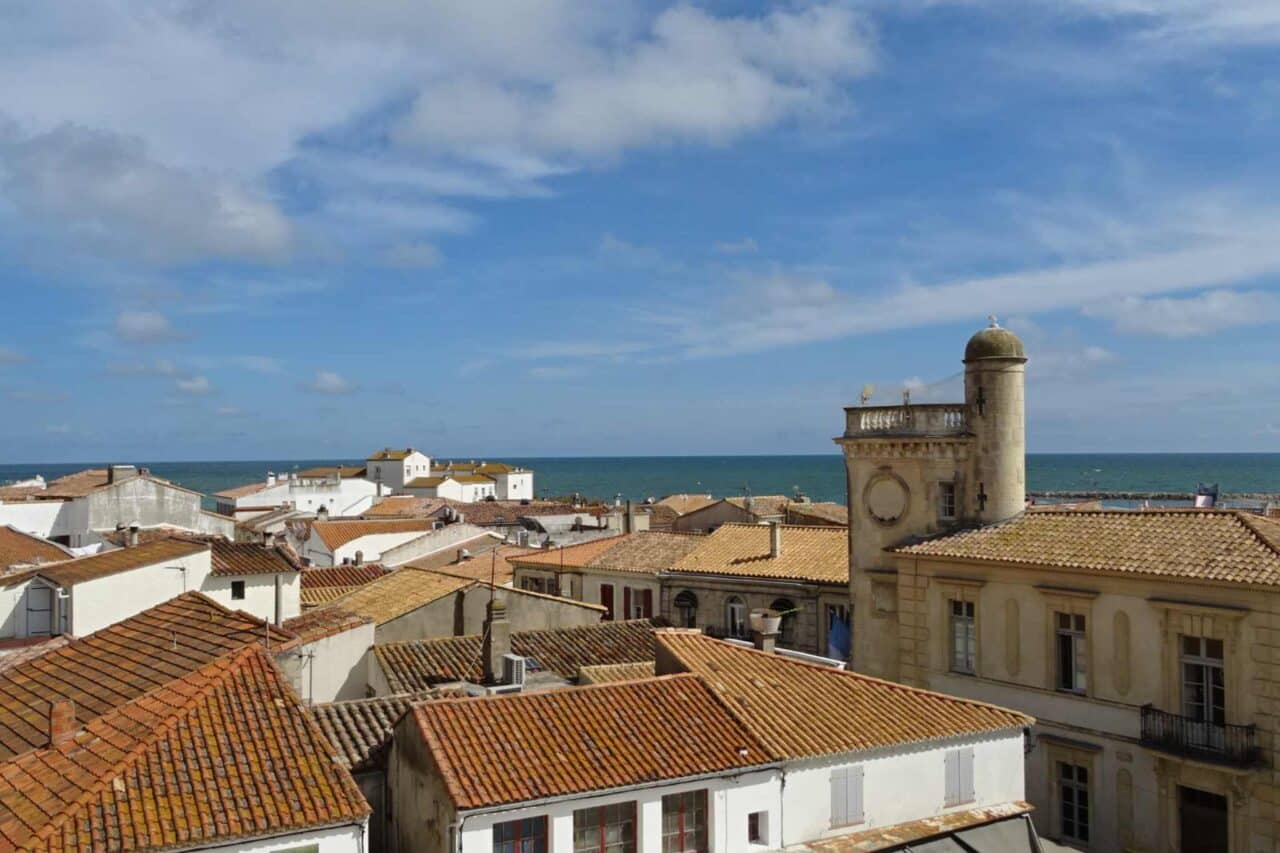
Aigues-Mortes
A fortress city that could hardly be more striking: a huge city gate, 20 towers, a square wall surrounding the city. The history of Aigues-Mortes dates back to the 13th century, and today you can take a relaxed stroll through the cozy alleyways and explore the many restaurants and small stores in the old town. From the almost 1.6-kilometer-long city wall, you have a fantastic view of the surrounding landscape and the pink salt pans of the Salins du Midi. Do you love the most beautiful castles and historic palaces? In this article you will find our top recommendations for France.
Saintes-Maries-de-la-Mer
The “capitale camarguaise”, the capital of this unique region, is located directly on miles of sandy beaches, by the turquoise blue sea and offers numerous opportunities for horse riding through the enchanting countryside in the surrounding area. Visitors can literally climb onto the roof of the Notre-Dame-de-la-Mer pilgrimage church and enjoy the magnificent view over the city.
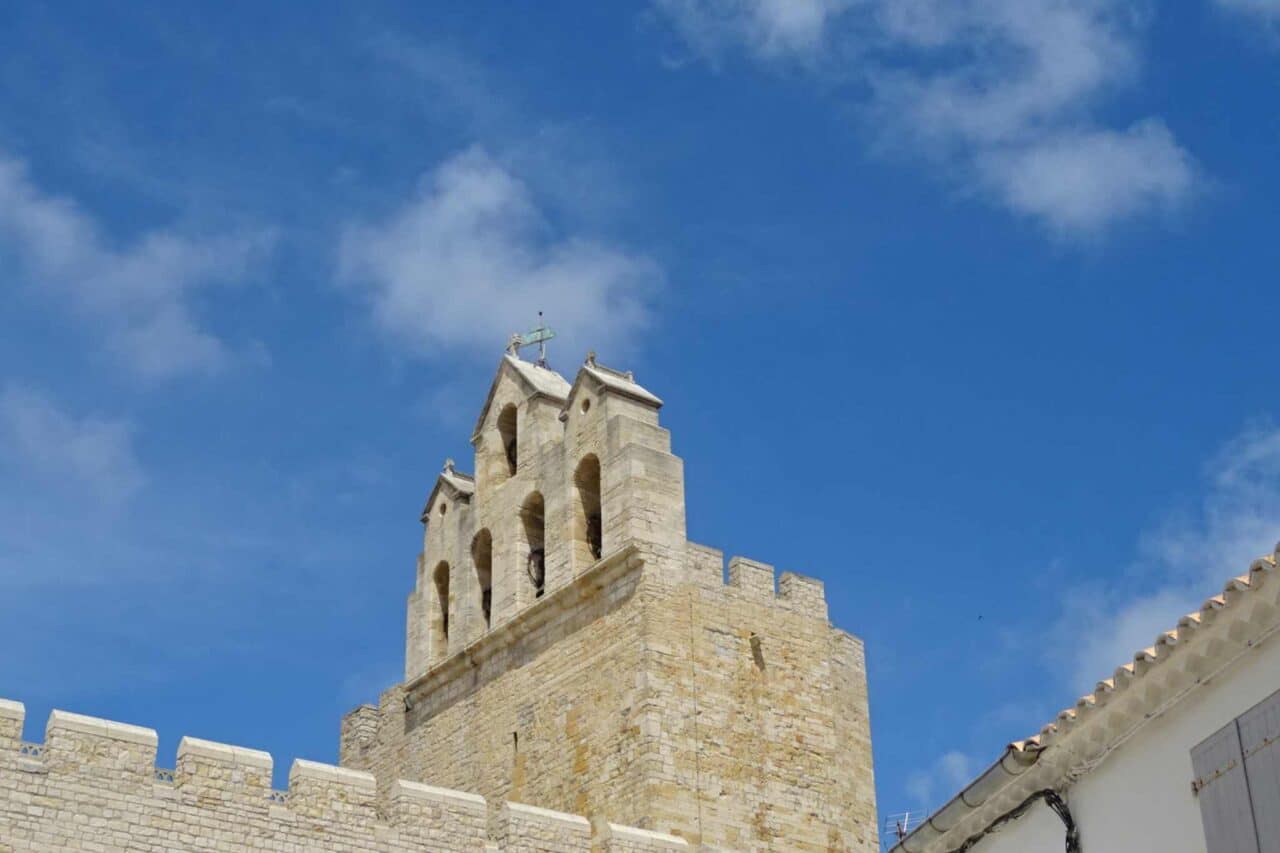
In the arena right by the sea traditional Camargue shows There are countless cafés and restaurants in the town, traditional crafts as well as souvenirs and souvenirs in the numerous stores – and when horses and bulls are driven through the streets in the middle of the day, it’s a bit like a bygone era.
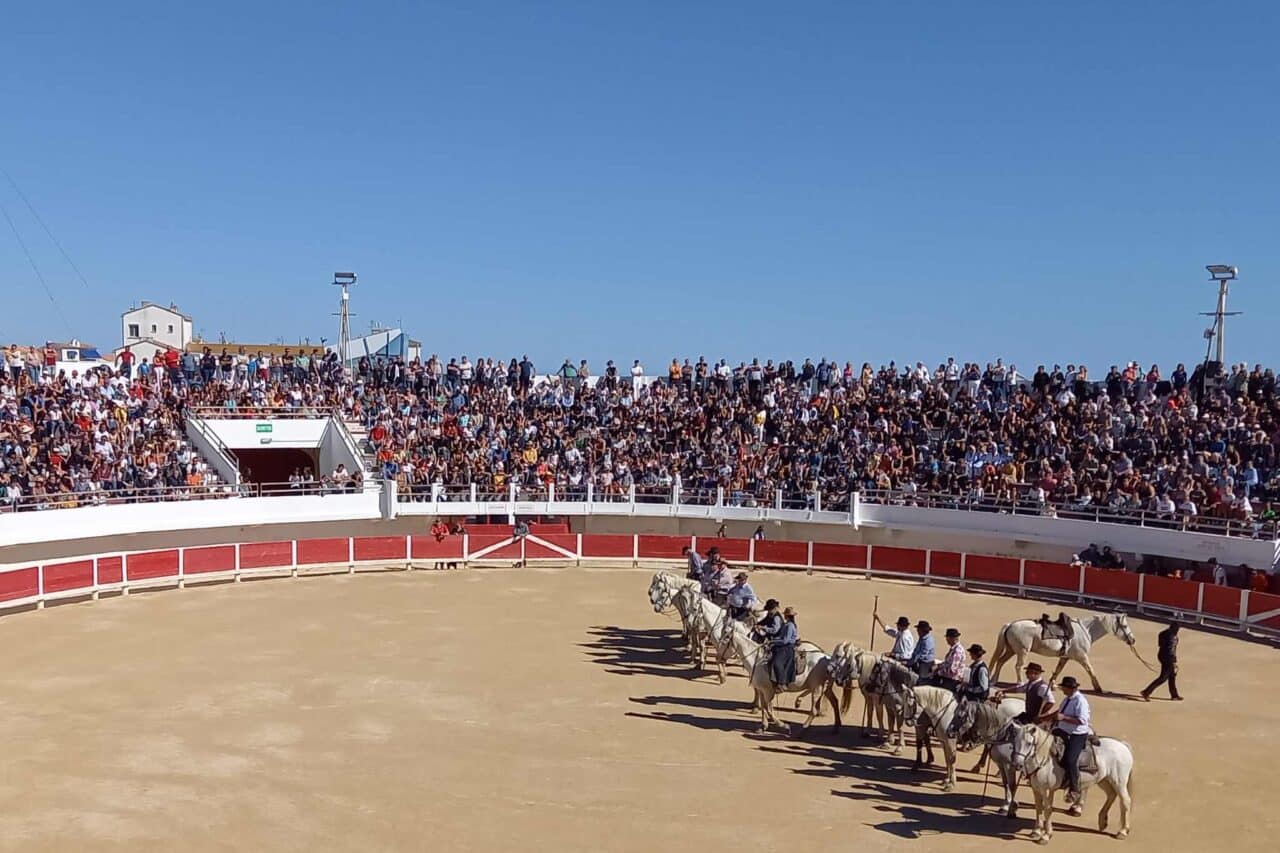
The Place des Gitans, the town’s central square, is home to the weekly market typical of Provence, where culinary specialties such as cheese, ham, rice, Provençal herbs and salt, naturally from the surrounding salt works, are on sale. Otherwise, people play boules here, the ladies and gentlemen of the village get together for a daily chat and enjoy a pastis or two here in the evening. And when the sun sets at the end of the day and the flamingos relax and feed in this special evening light, making their very individual sounds, you can feel the unique, calming and grounding atmosphere in this very special spot in the south of France.
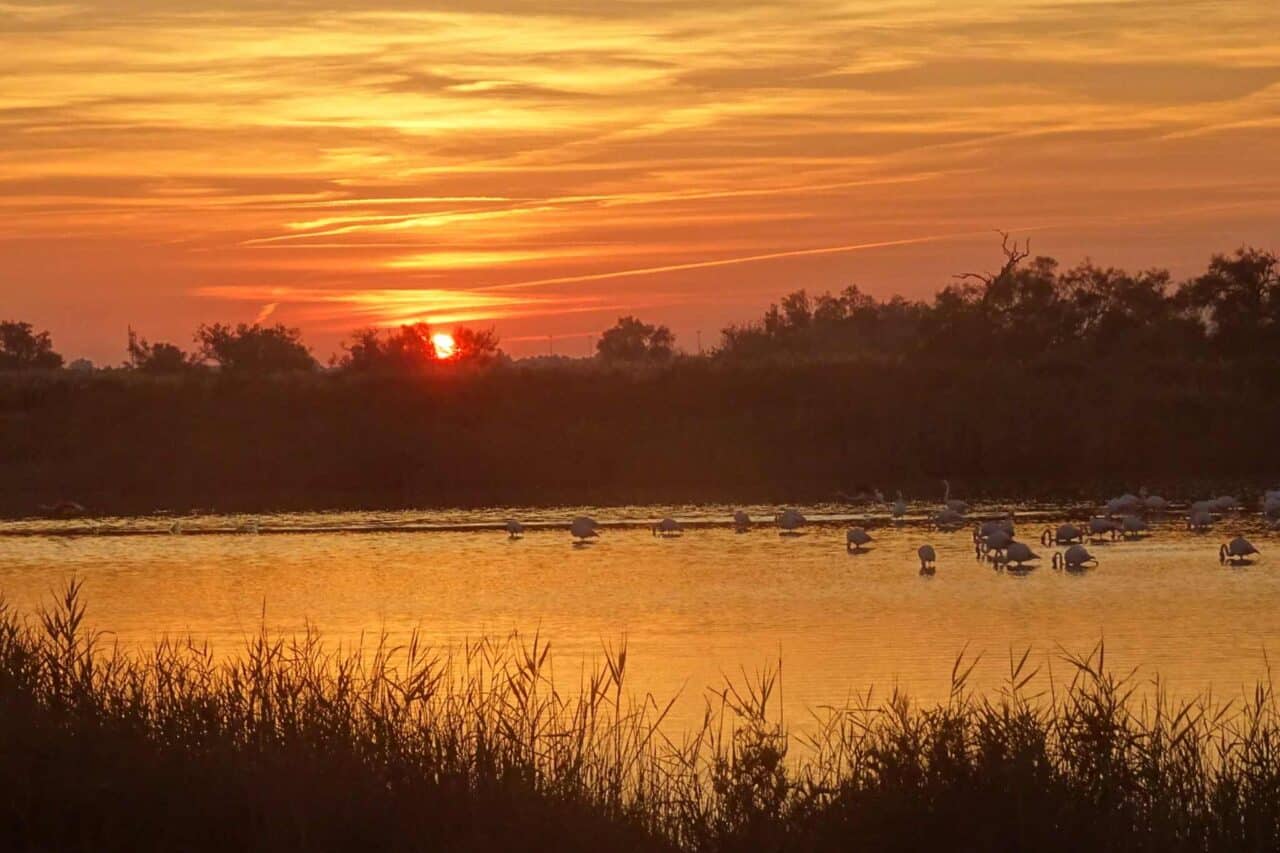
Are you looking for even more travel inspiration for France? Then take a look at our article on the most fantastic travel regions for campers in France.
Photos: © Katja Scholz
